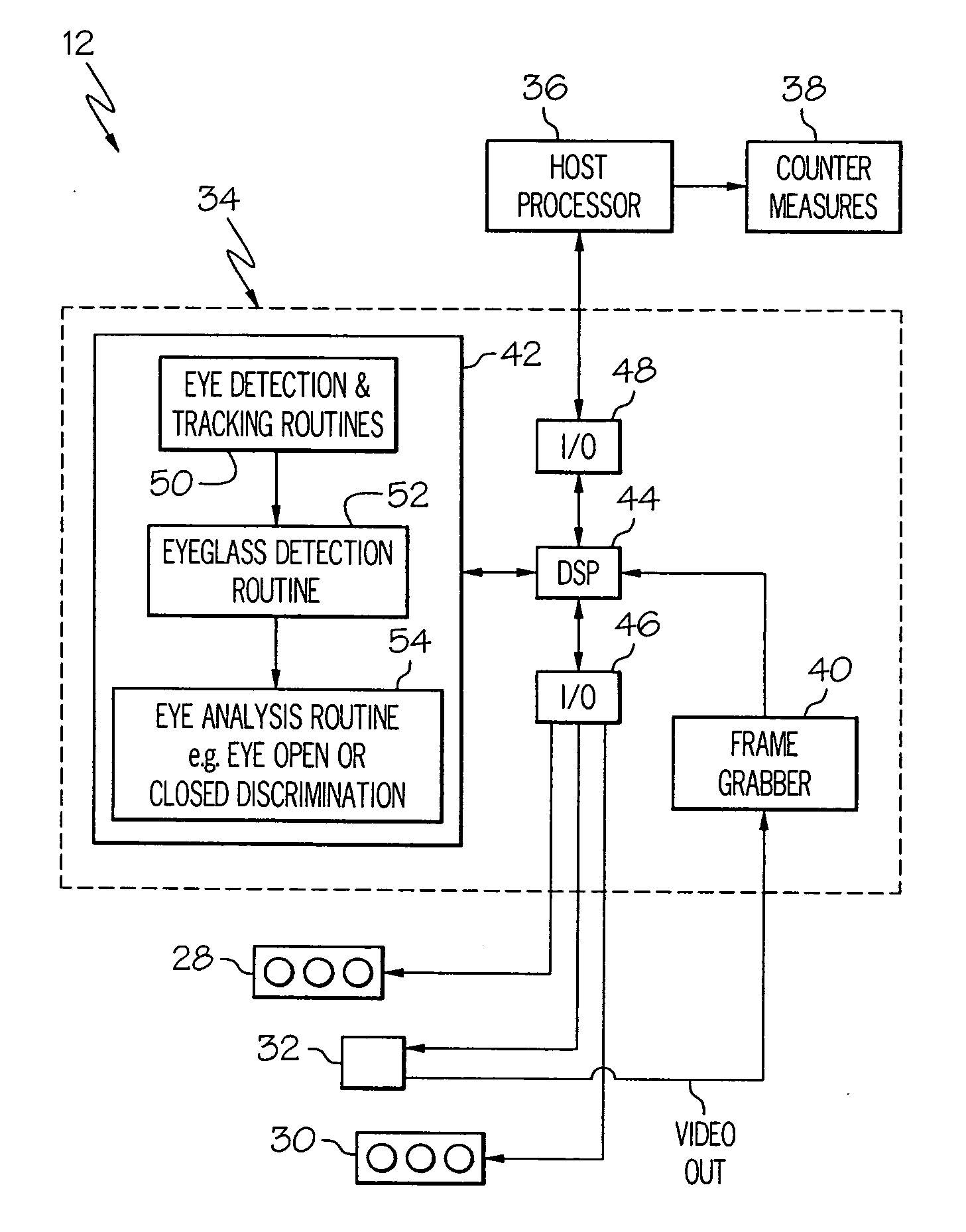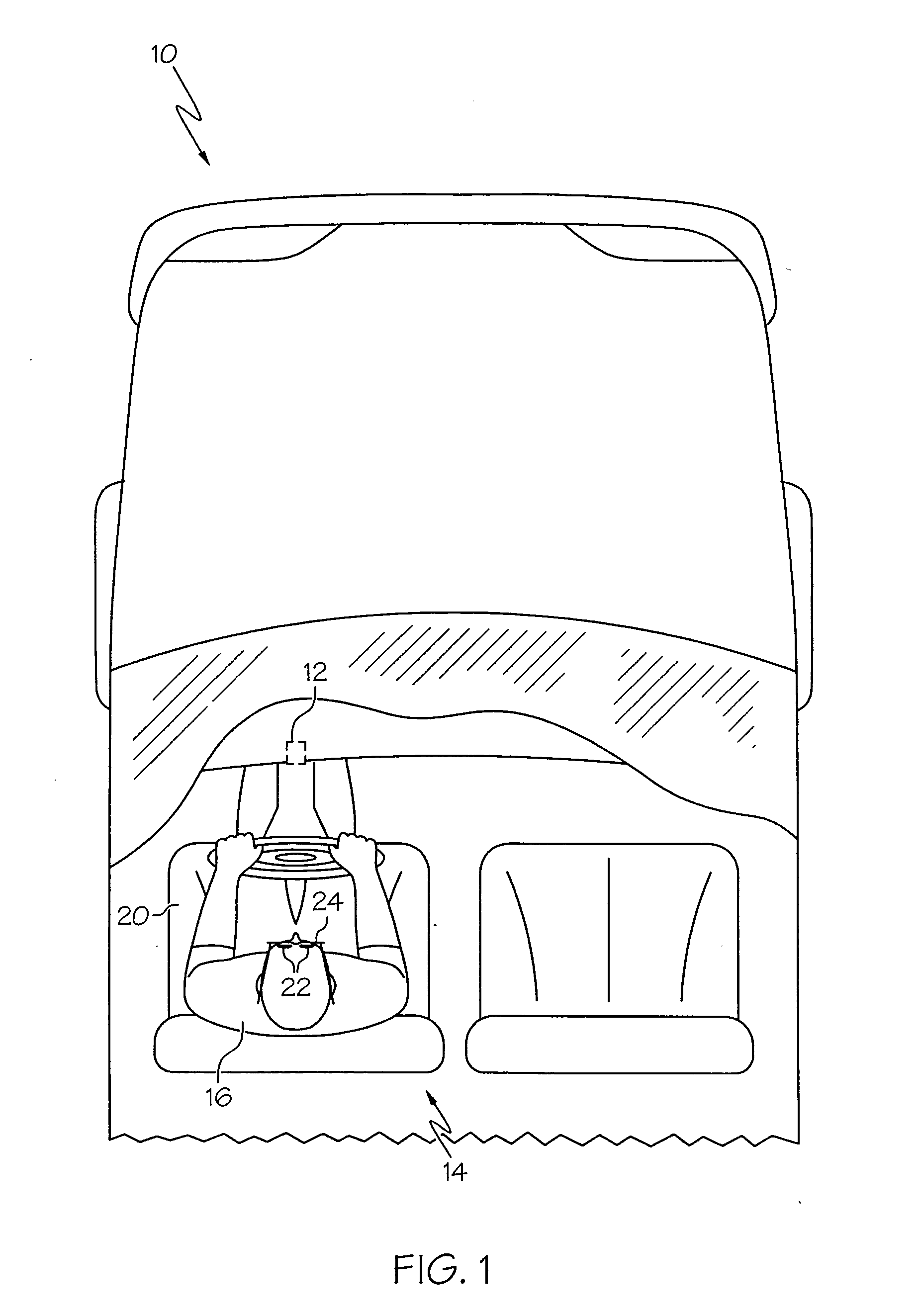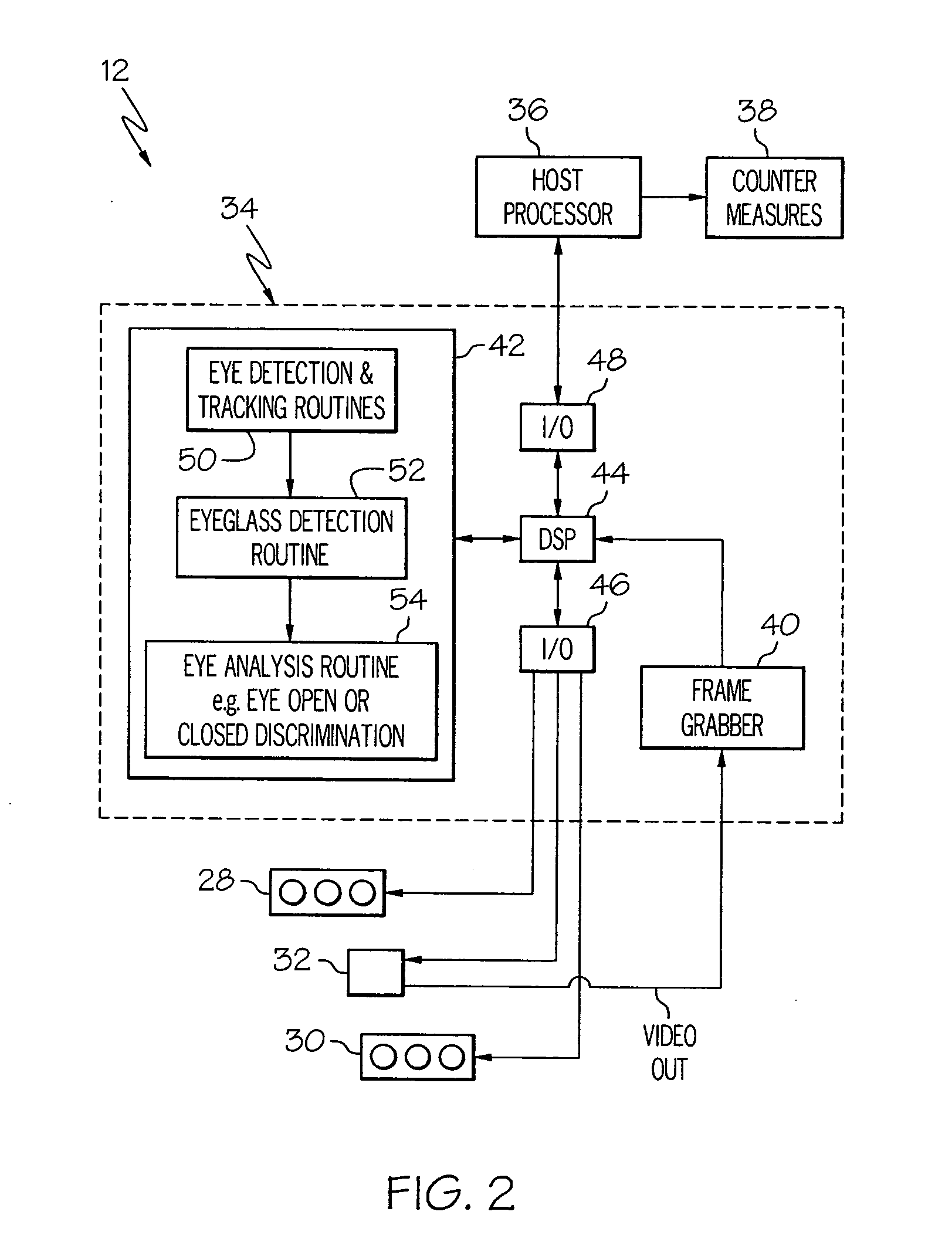Eyeglass detection method
a detection method and eyeglass technology, applied in the field of eyeglass detection methods, can solve the problems of glare spots, eyeglasses complicate eye monitoring, and change the appearance of the driver, and achieve the effect of reliable determination
- Summary
- Abstract
- Description
- Claims
- Application Information
AI Technical Summary
Benefits of technology
Problems solved by technology
Method used
Image
Examples
Embodiment Construction
[0013]Referring to FIG. 1, the method of the present invention is disclosed in the context of an eye monitoring apparatus 12 for the driver 16 of a motor vehicle 10. However, it will be recognized that the method of this invention is equally applicable to other vision systems that monitor a human eye, whether vehicular or non-vehicular. In the illustration of FIG. 1, the eye monitoring apparatus 12 is mounted in the passenger compartment 14 of vehicle 10 forward of the driver 16 in a location that affords an unobstructed view of the driver's face when the driver 16 is reposed on the seat 20, taking into account differences in driver height and orientation. In general, the eye monitoring apparatus 12 actively illuminates driver 16 with infrared (IR) light and produces a stream of video images that include the driver's eyes 22. The images are processed to locate the driver's eyes in a given image 22 and to track the eye locations from one image to the next. The state of the eyes 22 ca...
PUM
 Login to View More
Login to View More Abstract
Description
Claims
Application Information
 Login to View More
Login to View More - R&D
- Intellectual Property
- Life Sciences
- Materials
- Tech Scout
- Unparalleled Data Quality
- Higher Quality Content
- 60% Fewer Hallucinations
Browse by: Latest US Patents, China's latest patents, Technical Efficacy Thesaurus, Application Domain, Technology Topic, Popular Technical Reports.
© 2025 PatSnap. All rights reserved.Legal|Privacy policy|Modern Slavery Act Transparency Statement|Sitemap|About US| Contact US: help@patsnap.com



